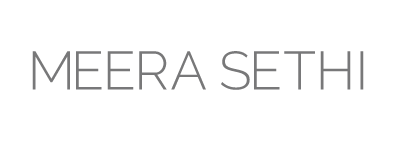A small but mighty publication was released in June 2023 by Hamilton Artist Inc., the location of my fall 2022 solo exhibition of Who’s Your Dadi?
Written by author Laila Mailk, “The Dadi Principle” offers thoughts and reflections on the Who’s Your Dadi? series of paintings.
Malik’s words resonate with searing insight into the position of paternal grandmothers in the hierarchy of South Asian patriarchy while also rightly affording them the status of “a lost council of elders”. Malik’s words situate the paintings beautifully, adding layers of depth and meaning.
Physical copies are available free of charge and by request through the Hamilton Artists Inc. publications page.
The Dadi Principle
by Laila Malik
Seemingly benign, Dadi is quicksilver.
At Meera Sethi’s exhibition Who’s Your Dadi (2022), we are invited in, gently immersed, and the boundaries between the real and the imaginary, the remembered, forgotten, and might-have-been are momentarily uncertain.
But this is not your mother’s Dadi.
Or maybe it is.
The Dadi is not just a grandmother. She is your father’s mother. In some patriarchies, this position holds particular meanings. It can mean that she has passed through various pre-set trials and arrived at the pinnacle of feminine achievement, which is to say, the mother of a son who has betrothed and begat. It often means she has finally earned the right to reign within her prescribed channels—as opposed to the other grandmother, the Nani, who must make peace—or war—with the so-called reproductive failure of bearing daughters, in whatever ways she can. Significantly, it can mean that the Dadi supersedes even the patriarch.
She can be the source of great affection, showering her heirs with rewards for coming to fruition. She can be the source of dread, punishing and policing them for interloping maternal genes. She can be the source of justice, keeping errant sons in check and ensuring they never do to their wives what may have been done to her or to others like her.
Sethi’s Dadi may embody some of these experiences. Viewers may catch glimpses of their own paternal grandmothers in the attire, expressions and postures of Sethi’s subjects—all of whom are entirely imagined by the artist.
But Sethi’s Dadi is also a coven. There is a powerful, quiet multiplicity, transcending class, sub-ethnicity and geography. They might not exactly be friends with one another, one a dream in pastels, poised on intricately carved wood, under an embroidered frieze, adorned in a delicate, eyeleted white cardigan, another cross-legged on the floor and staring directly at the viewer, her red and black mackinaw and hand-knitted orange balaclava seamless over a printed shalwar qameez, her bare feet unapologetic, the corner of a bicycle visible through the open door to the laundry line in the gully behind her. Every detail in Sethi’s textile and setting choices holds specific meaning and sends a unique message—while broadly culturally connected, each of these Dadis inhabits a wildly different world from the next.
Yet, they are nonetheless silently at work together from their respective perches, with pens and blank sheets of paper at the ready in each of their frames. These are weapons and warnings. They should instill excitement—and for some, maybe fear—because Sethi has convened a lost council of elders who are watching and taking note, connected by this material technology, always within arm’s reach. Across class and land and ocean, they exist as a collective refusal to be written out of the narrative.
With her characteristically subtle hand, Sethi has invoked a Dadi Principle.
This imaginational work is precious. The clamour of assertions about who we were and who we must become is cacophonous and filled with forces who would usurp and redirect these ideas to their own ends. Sethi’s question, who’s your Dadi?, is tongue-in-cheek and rhetorical as much as it is urgent and essential. Sethi is asking us, who will we choose, and what will we take forward? They are watching, the Dadis, counseling us to choose wisely, choose justly, choose lovingly.
Our futures hang in the balance.
